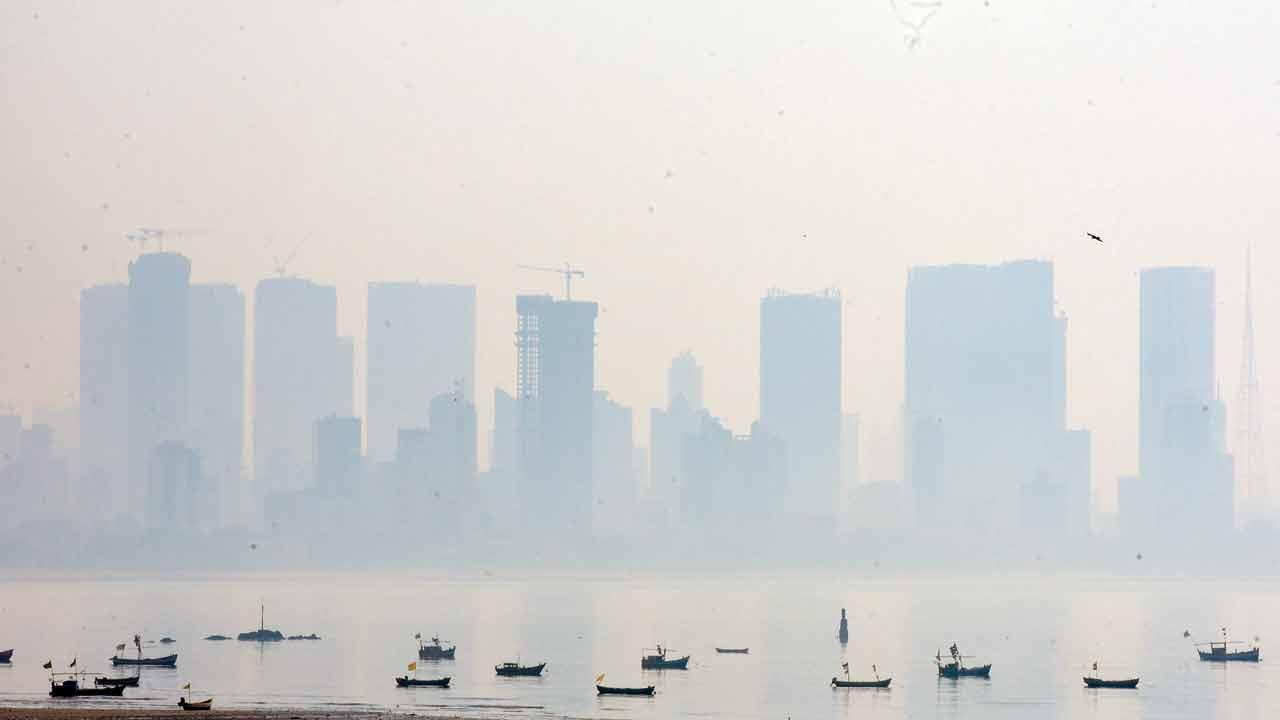...does not lie in smog towers, say experts; instead, they want govts to invest more in effective solutions, like air quality monitoring and public health advisories

Doctors say smog towers being promoted as a solution for air pollution are of no use for the city. File pic/Shadab Khan
Even as smog towers are being pitched as a solution to combat rising air pollution across India, health professionals advise that Mumbai or a state like Maharashtra should not waste money on them. Given that the onset of winter is few months away and issues pertaining to air pollution will resurface, medical practitioners and experts have said that smog towers are of no use for the city. Doctors also advised that the governments invest in real and more effective solutions, such as air quality monitoring and prompt public health advisories for poor air days to deal with air pollution, experts said.
ADVERTISEMENT
‘An expensive affair’
Speaking at the India Clean Air Summit 2022 (ICAS 2022), a four-day event in Bengaluru on the theme ‘Looking at Air Pollution through the Climate Lens’ organised by the Centre for Study of Science, Technology and Policy (CSTEP), Dr Harshal Salve, additional professor, All India Institute of Medical Sciences (AIIMS) outlined the fundamental limits of smog towers. “The principal reason is that they are expensive and have little or no actual influence on citizens’ exposure to air pollution,” Salve stated.
Also read: India's first smog tower inaugurated in Delhi
Smog towers are structures that function as massive air cleaners. They typically have numerous layers of air filters installed, which remove pollutants from the air as it travels through them. Polluted air is drawn in at a height of 24 metres and filtered air is released at the base of the tower, at a height of roughly 10 metres above the ground, using a ‘downdraft air cleaning system’. They may offer short-term respite from air pollution in an area, but Dr Salve terms them as expensive band-aid solutions without any long-term scientific support.
“I don’t think smog towers will be useful in addressing the air pollution problem at its core. What we really need to address is the source of emission rather than try to capture emissions in the air. This is applicable to smog towers or even air purifiers. We really have to see its cost-effectiveness in terms of how much we are investing and how much we are gaining out of it. This intervention is ranked at the lower level against others,” said Salve.
‘Get message to people’
“As compared, issuing health advisories is of prime importance as it is communicating to citizens through health and scientific applications. If we invest in such interventions it will give us better outcomes. Communication is key. If demands are public driven then there are automatically more outcomes,” Dr Salve said, adding we must put emphasis on communicating to the public through social media, apps, newspapers, etc. with respect to monitoring of the day-to-day air quality and what should be done. “People need to clearly understand the risks of inhaling polluted air – ensuring that we are able to reach the masses with the message is critical,” he said.
Even officials from the Central Pollution Control Board (CPCB) have stated that technology such as smog towers is still being tested and is not a permanent answer to the problem of pollution. “The ultimate solution to pollution would be controlling it at its source,” said an official.
“We have been telling that installing smog towers is not a solution for years now. It is like putting an air-conditioner in an open place and expect cooling. We know the problems, and we know solutions too. The first step is to make people aware of the issue. Local bodies and governments have failed when it comes to reaching out to the masses and communicating with them. We at SAFAR try to reach out to the public and inform them about daily AQI in different languages through our mobile application and website. This is more effective,” said Gufran Beig, founder and project director of System of Air Quality Weather Forecasting And Research (SAFAR) under the Ministry of Earth Sciences.
 Subscribe today by clicking the link and stay updated with the latest news!" Click here!
Subscribe today by clicking the link and stay updated with the latest news!" Click here!







